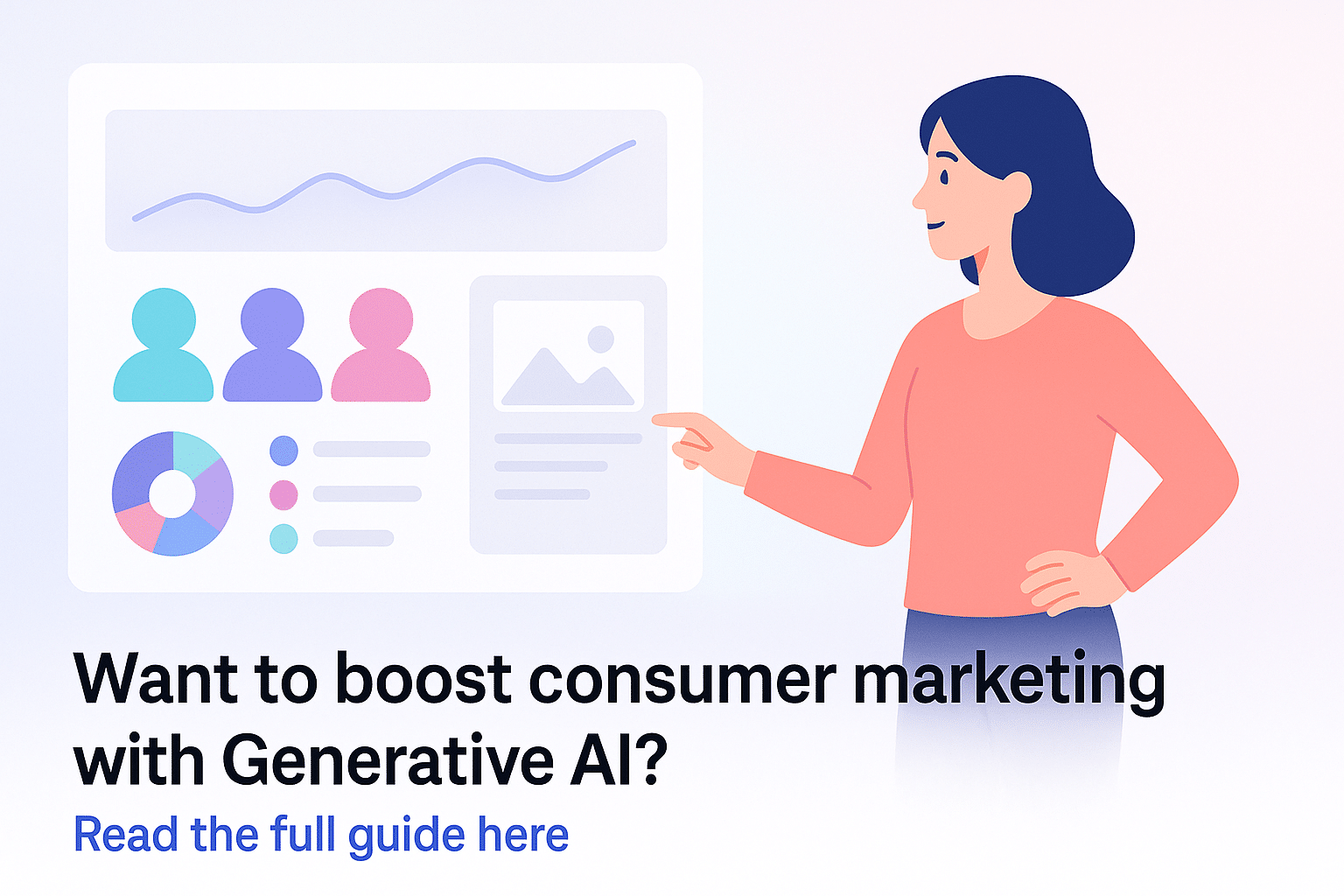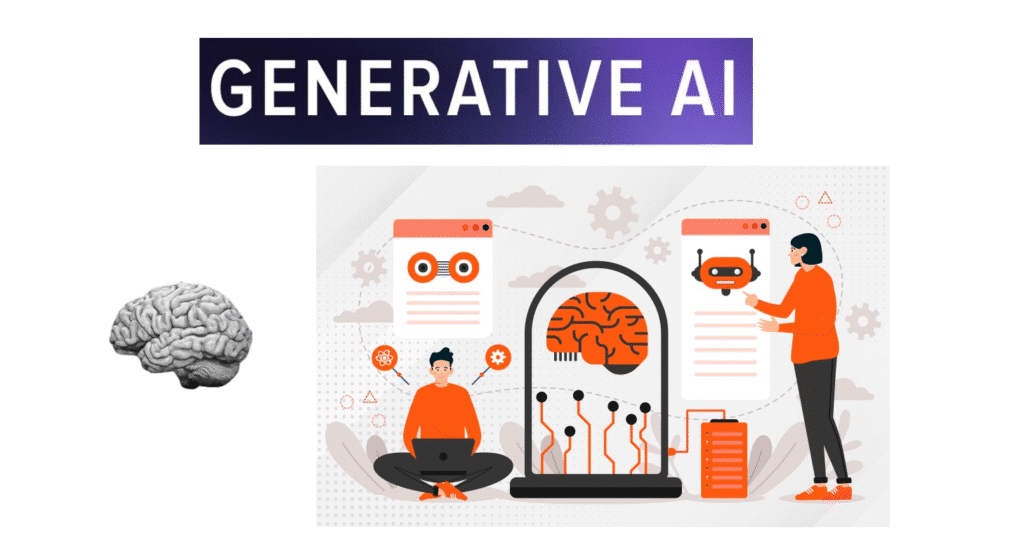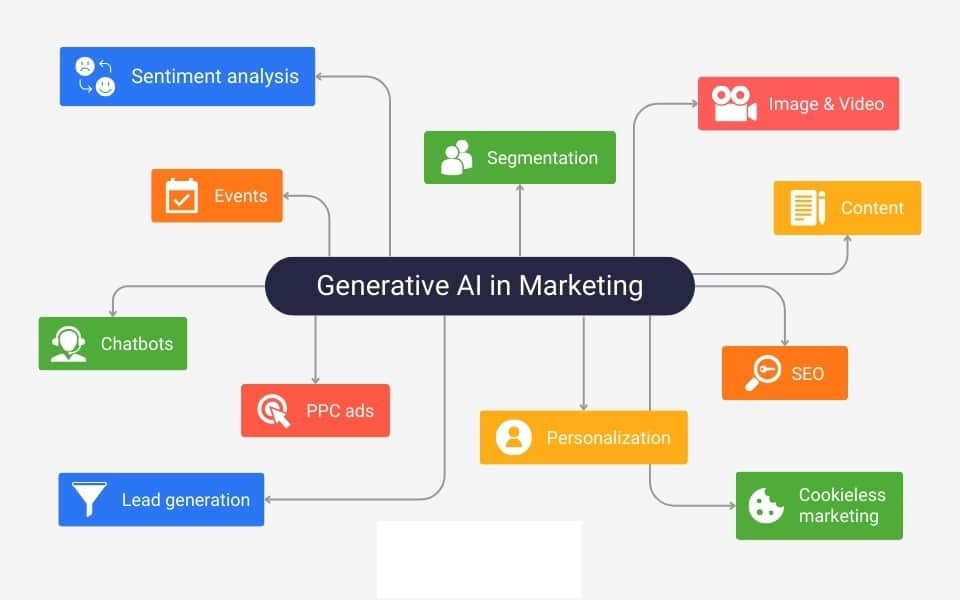

Consumer marketing is shifting fast. Teams want faster output, sharper content, and smarter decisions without increasing workload. This is why generative AI is becoming a core part of how brands work in 2026.
A recent Salesforce study shows that 71 percent of marketers believe generative AI will help them remove busy work and focus more on strategic tasks. This tells us the shift is already here. Brands are not just testing these tools; they are using them to speed up content, planning, and customer engagement.
Before we go into the full use cases, let us understand what generative AI is.

Generative AI refers to tools that create text, visuals, and ideas with simple prompts. Well-known examples include ChatGPT, Claude, and Gemini. For marketers, these tools act like quick support that speeds up drafts and creative thinking during tight campaign cycles.
Instead of starting from a blank screen, teams can request a rough draft, a headline option, or a visual idea and get something usable within seconds. This keeps their energy on message and the audience, instead of slow manual work.
The gain is clear. When teams need ads, emails, or daily content, these systems help produce steady output while keeping the brand voice in control of the marketer, not the tool.
Generative AI gives marketing teams a faster way to plan, write, and test campaigns. Here are five practical applications that help with day-to-day work.

Teams often spend long hours testing lines for search and social campaigns. Generative AI helps by turning short prompts into several headline and body options that match the tone of the brand. This gives marketers more room to try fresh angles without slowing the approval cycle.
It works well when teams need quick variations for A and B testing or want to refresh old campaigns without starting from scratch. The tool gives early options, and the marketer shapes the final version.
From our work, the tools that perform well for ad copy idea generation are ChatGPT and Jasper.
Cold outreach takes time because each message must feel clear, polite, and relevant. Generative AI helps teams create first drafts for outreach, product updates, and lead follow-ups. Marketers can adjust the tone, length, and call to action in seconds.
It is also useful for refreshing long nurture sequences. Instead of rewriting everything, teams can rework sections with short prompts and keep the flow consistent across the entire path.
Based on real use cases, ChatGPT and Copy.ai are often used to shape early email drafts before marketers refine the final copy.
Also read: 11 AI email marketing tools for 10x more sales
Social posts, banners, and product visuals usually need quick early samples for testing. Generative AI helps by creating starting points that designers and marketers can refine. It reduces the time spent on early idea sketches and gives teams a faster way to explore creative routes.
Marketers can request simple product shots, themed backgrounds, or layout ideas. These early visuals are not the final output, but they help teams decide direction faster and reduce back-and-forth work.
We have seen strong results from tools like Midjourney and Adobe Firefly for creating early visual drafts that guide the final design.
Website visitors often look for fast answers, and teams cannot always respond at the same speed. AI chat assistants help by handling common questions, guiding users to the right page, and giving basic product details. This reduces load on support teams and helps visitors move through the site with ease.
Marketers can also use these assistants to collect user intent, recommend products, and support early lead qualification. It creates a smoother first touch without adding pressure on the team.
For this use case, tools such as Intercom Fin and Zendesk AI have shown reliable performance in real marketing workflows.
Ecommerce users expect quick help when comparing items or looking for the right product. A virtual shopping helper offers simple guidance by asking a few questions and suggesting items that match the user’s needs. This improves the buying experience and reduces the drop rate across product pages.
Brands use this tool to support new shoppers, highlight key features, and remove confusion when choices are wide. It also helps customers feel more confident before checkout.
Many brands rely on Shopify Sidekick and ChatGPT API setups to power these virtual shopping helpers.
Online stores need product descriptions that are clear, short, and easy to read. Generative AI helps teams create early drafts that highlight features, use cases, and benefits without long manual writing. This is useful when brands handle large catalogs or frequent product updates.
Marketers can adjust the tone, focus on key selling points, and maintain consistency across all pages. It also helps teams maintain a steady content flow during seasonal launches or new category rollouts.
From ongoing industry work, teams often use ChatGPT and Writesonic to create the first version of product descriptions before refining them.
Social content needs constant freshness, and this often puts pressure on teams. Generative AI helps by offering early ideas for posts, caption drafts, and theme variations. This removes the struggle of coming up with new angles every day.
It also helps teams shape weekly calendars by suggesting hooks, formats, and simple creative prompts. This saves time and keeps social pages active even during busy weeks.
For this use case, many marketing teams rely on ChatGPT and Notion AI to generate early post ideas that they later refine.
Marketing performance improves when teams understand the needs of each group. Generative AI helps by summarizing customer behavior, intent signals, and feedback from different channels. These summaries make it easier to plan targeted campaigns.
Teams can then shape messages for each group without spending long hours sorting through reports. This leads to more focused ads and better engagement across email, social, and paid channels.
Marketers commonly use ChatGPT and Claude to create simple, readable insights that guide audience planning.
Landing pages often take several rounds before they look right. Generative AI helps teams create early layouts, content blocks, and clear value statements based on a short brief. This gives marketers a baseline version they can refine with designers and developers.
It works well for campaign pages, event signups, and product releases where speed matters. Instead of waiting for the first draft, teams can start shaping the page structure on day one.
For landing page content, teams often use ChatGPT and Jasper to produce the first workable draft.
Also read: How to get featured in AI overviews & voice search results
Campaign planning usually involves long notes, scattered ideas, and repeated revisions. Generative AI supports this process by turning rough inputs into structured outlines, angle suggestions, and early campaign themes. This keeps the team aligned from the start.
It also helps create checklists, messaging paths, and creative directions for each stage of the campaign. This reduces confusion and makes the planning cycle smoother.
For this workflow, tools like ChatGPT and Claude are widely used to convert loose thoughts into a clear, workable plan.
Below is a clear step-by-step guide you can follow to add generative AI into a marketing plan. Each point is short, specific, and aimed at practical action.
Generative AI is shaping the next stage of consumer marketing as brands look for faster decisions and cleaner communication. With wider use of generative AI in marketing, teams will handle content cycles with more speed and steady quality. This shift will help brands react to trends in real time instead of waiting for long production cycles.
The rise of AI in consumer marketing also means deeper personalization. Marketers can shape messages for smaller groups, improve product suggestions, and adjust campaigns based on live feedback. This creates better outcomes across ads, email, and social channels.
As tools mature, the focus will move from simple drafts to smarter systems that support planning and testing. This will show clear gains in reach, output, and overall performance, proving how AI helps marketers stay ahead.
1. How can brands use personalization using generative AI?
Brands can shape messages for smaller groups by using short prompts and customer data. This helps them adjust content for interests, timing, and buying intent. The result is better engagement across ads and email paths.
2. What are some real AI marketing examples?
Teams use AI for social post ideas, product descriptions, campaign notes, and early design drafts. Many also rely on it for customer replies, survey summaries, and competitor checks. These simple tasks show clear value in daily work.
3. What are the benefits of generative AI for brands?
Brands see gains in speed, consistency, and output. It cuts manual work and helps teams handle more campaigns with the same resources. It also supports cleaner planning and faster testing cycles.
4. Which AI tools for marketing 2025 should teams consider first?
Most teams start with tools that support writing, planning, and basic visuals. ChatGPT, Jasper, and Midjourney are common picks because they fit well with simple marketing tasks and give steady results.
5. How does generative AI support AI content creation marketing?
It helps by turning short prompts into early drafts for blogs, ads, emails, and landing pages. Marketers can adjust tone and flow quickly, which makes the full content cycle smoother and faster.
Schedule a Call and Get a 7-Day Free Trial
No Credit Card Required
Schedule a Call and Get a 7-Day Free Trial
No Credit Card Required
What’s Included in the Trial:
✓7 days of work across six key technologies
✓Access to premium tools needed for your projects
✓No questions asked if you choose not to continue afterward
✓Transparent communication with daily progress updates
✓Fast turnaround to help you meet tight deadlines
✓ Opportunity to test our workflow and collaboration process firsthand
Stellites partners with digital agencies as a white-label provider for their talent and development needs. We offer top-tier professionals in Digital Marketing, SEO, Paid Advertising, as well as WordPress, Shopify, and other platforms—available on a full-time or pay-as-you-go basis.
At Stellites, our white-label development services are designed to deliver 100% pixel-perfect and technically complex projects within competitive timelines, allowing your agency to scale effortlessly and impress your clients.
Stellites partners with digital agencies as a white-label provider for their talent and development needs. We offer top-tier professionals in Digital Marketing, SEO, Paid Advertising, as well as WordPress, Shopify, and other platforms – available on a full-time or pay-as-you-go basis.
At Stellites, our white-label development services are designed to deliver 100% pixel-perfect and technically complex projects within competitive timelines, allowing your agency to scale effortlessly and impress your clients.
COPYRIGHT © 2025 Stellites Technologies. All Rights Reserved.
Get 15% Discount on all product
Enter your email to receive your exclusive coupon and start saving on your next purchase. Don’t miss out on special deals and updates!
[contact-form-7 id="702acf5" title="Get Coupon Code"]